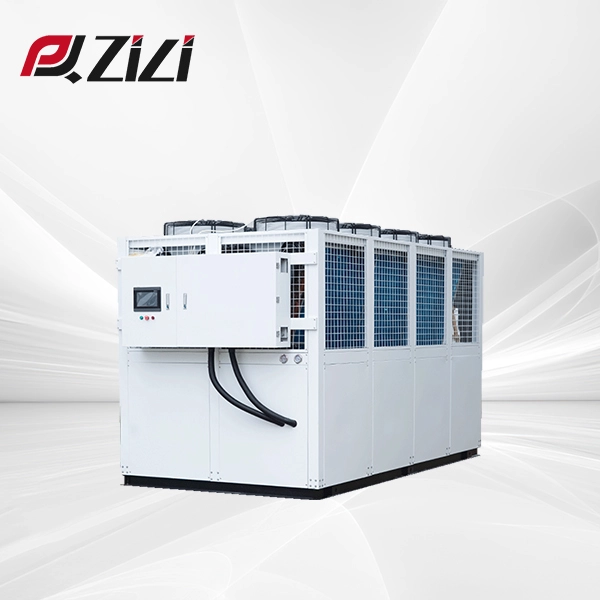
Screw air-cooled chillers typically have a cooling capacity range from around 20 tons to 500 tons. These chillers use a rotary screw compressor, which is efficient and reliable for medium to large-scale cooling applications. The capacity can vary based on the specific design, manufacturer, and intended application. They are commonly used in commercial buildings, industrial processes, and data centers where precise temperature control is essential. The air-cooled design eliminates the need for a cooling tower, making them suitable for locations with limited water resources or where water conservation is a priority.

Improving the efficiency of screw air-cooled chillers involves several strategies that focus on optimizing performance, reducing energy consumption, and ensuring proper maintenance. Here are some key approaches:
Regular Maintenance: Routine maintenance is crucial. Clean the condenser coils regularly to ensure efficient heat transfer. Check for refrigerant leaks and ensure the refrigerant charge is optimal. Inspect and replace air filters to maintain proper airflow.
Upgrade Controls: Implement advanced control systems that optimize chiller operation based on real-time demand. Variable speed drives (VSDs) can be installed on compressors, fans, and pumps to adjust their speed according to the cooling load, reducing energy consumption.
Optimize Setpoints: Adjust the chiller setpoints to match the actual cooling requirements. Avoid setting the temperature lower than necessary, as this increases energy usage. Utilize a chilled water reset strategy to adjust the chilled water temperature based on the load.
Improve Airflow: Ensure that the chiller has adequate airflow. Remove any obstructions around the chiller and ensure that the installation site has good ventilation. Proper airflow reduces the workload on the chiller, enhancing efficiency.
Heat Recovery: Implement heat recovery systems to utilize waste heat from the chiller for other purposes, such as preheating water. This can significantly improve overall energy efficiency.
Energy Audits: Conduct regular energy audits to identify inefficiencies and areas for improvement. Use the audit results to implement targeted energy-saving measures.



